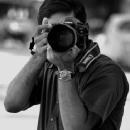
Kamothe, Mumbai, India - 410209.
Details verified of Sujith Gopinath✕
 Identity
Identity
 Education
Education
Know how UrbanPro verifies Tutor details
Identity is verified based on matching the details uploaded by the Tutor with government databases.







+4 more
Malayalam
Hindi
English
![]() University of Kerala 2001
University of Kerala 2001
Bachelor of Science (B.Sc.)
![]() University of Kerala 2003
University of Kerala 2003
Master of Communication and Journalism
Kamothe, Mumbai, India - 410209
![]() Phone Verified
Phone Verified
![]() Email Verified
Email Verified
![]() Facebook Verified
Facebook Verified
Report this Profile
Is this listing inaccurate or duplicate? Any other problem?
Please tell us about the problem and we will fix it.
Answered on 18/03/2016 Learn Photography
Answered on 06/11/2014 Learn Photography
Answered on 18/03/2016 Learn Photography
Answered on 06/11/2014 Learn Photography

Share this Profile
Reply to 's review
Enter your reply*
Your reply has been successfully submitted.
Certified
The Certified badge indicates that the Tutor has received good amount of positive feedback from Students.